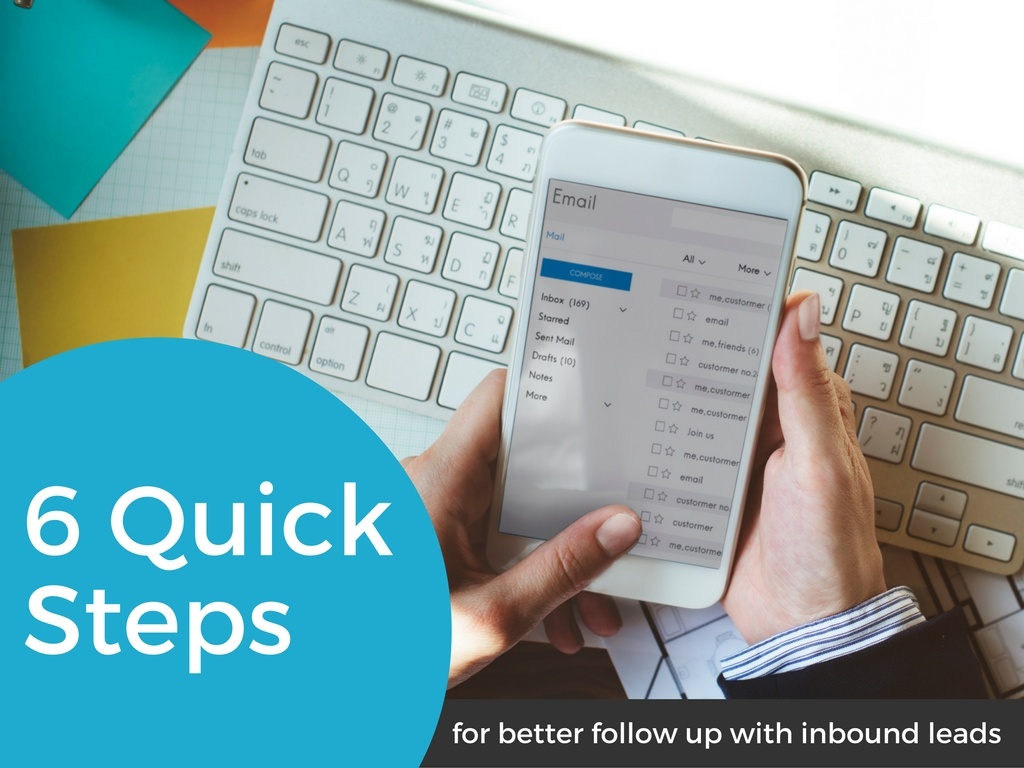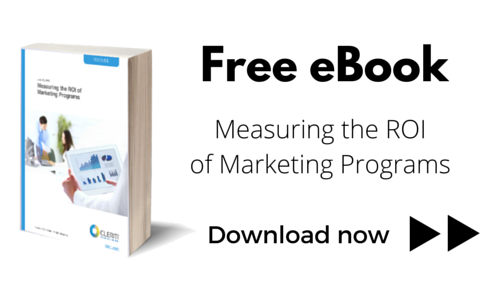- Dec 9, 2015
- By Sarah Tsai
- In Marketing Strategy and Planning
6 Quick Steps for Following Up with Inbound Leads

Lead generation is a critical element of any inbound sales process. Without quality leads, the sales process is unable to function. However, getting leads is just part of the battle. You also have to know how to handle those leads in order to find true success in inbound marketing. Moving leads along the sales funnel, without coming across as overly aggressive or too passive, is an art form. Follow these steps, and you’ll discover the secrets to converting leads into actual customers.
Step 1: Do Your Research
Leads are perishable assets. Statistics show that the sooner you make contact with an interested lead, the better your chances are of closing that lead. But you don’t want to make that call right away.
Why? Because blindly calling indicates that you’re more concerned about your sales numbers than you are in actually helping the lead. Taking a few minutes to do a little research and better understand the pain points of that lead can go a long way towards conversion.
There’s a major difference between understanding a potential customer and acting like you understand that potential customer. A savvy individual can spot this difference right away. Don’t rush things and blow your chances — take your time and approach the situation the right way.
Step 2: Make Contact
Now that you’ve done a little homework, it’s time to get on the phone. Although you don’t have to rush to make the call, it’s in your best interest to do it as early as reasonably possible. According to the Harvard Business Review, leads are seven times more likely to be converted into customers if they’re contacted within an hour of expressing their interest.
If you don’t get your lead on the phone right away, leave a voicemail and send a follow-up email. If you still haven’t heard anything within three hours, try calling again. This time, don’t leave a voicemail if they don’t pick up. Instead, leave a voicemail when you try calling the following morning.
Fighting for your lead without being too pushy is a balancing act. Erring on the side of aggression can alienate some people, so be careful not to make too many calls to lukewarm leads.
Step 3: Utilize a CRM
You’ve spoken to your lead. You’ve introduced yourself and have been established as the main point of contact for this lead. Now it’s time to analyze the response to your attention.
Your customer relationship management software keeps track of all activities performed by your leads. Use this information to your advantage. Look at whether or not they’re opening up your emails, if they’re clicking the links in the emails or if they’re reading multiple pages on your website. These actions are major signs that the lead is interested in what you have to offer.
Step 4: Be There For Your Lead
Inbound sales is all about showing leads that their business is important to you. Prove it by offering your expertise every step of the way. Although they know who you are, it never hurts to let them know you’re always available to contact.
If you’ve been paying attention to lead activity using your CRM tool, you can tell if the person may be slipping away. Take that opportunity to reach out and remind them about the best features your company has to offer. If they’re well on their way through the sales funnel, simply touching base and letting them know you’re there to answer any questions is a nice way to keep in touch without being too aggressive.
Step 5: Support After the Sale
Leads are more than entities that may or may not make a purchase from your company. They’re legitimate contacts that can and should enter long-term relationships with you and your organization.
Staying in touch with leads after they become customers reinforces your character and the role you played in converting the lead. This doesn’t mean merely throwing their email on a list and blasting them with your company newsletter. Reach out every so often to make sure they’re satisfied with your product and to see if there’s anything else you can do. These seemingly small gestures will go a long way towards making your clients happy over the long haul.
Step 6: Repurpose Your Information
Your work doesn’t stop after you’ve completed a sale. You now have a tremendous opportunity to apply what you’ve learned from a successful sales interaction to future opportunities with leads. It’s very wise to take advantage of this opportunity.
Your lead undoubtedly exhibited certain characteristic behaviors throughout the sales process. Why not put that information to good use? You can use your newfound knowledge to update your buyer personas. You can also refine your paid search strategy or enhance your outbound marketing. The important thing is to funnel as much information as possible back into your overall marketing strategies.
Find a Balance that Works with Your Customers
Inbound sales can be a tricky beast if you’re not careful. Generating a lead guarantees you nothing — especially if you’re slow with a sales call or if you’re overly aggressive when you finally get on the phone. A measured approach that combines quick communication with pre-emptive research gives you the best chance at converting your lead. From there, use what you’ve learned to revise your marketing tactics as a whole, and be sure to provide adequate support after you’ve made the sale. This will turn your inbound marketing into a well-oiled machine that attracts and converts great leads on a consistent basis.





